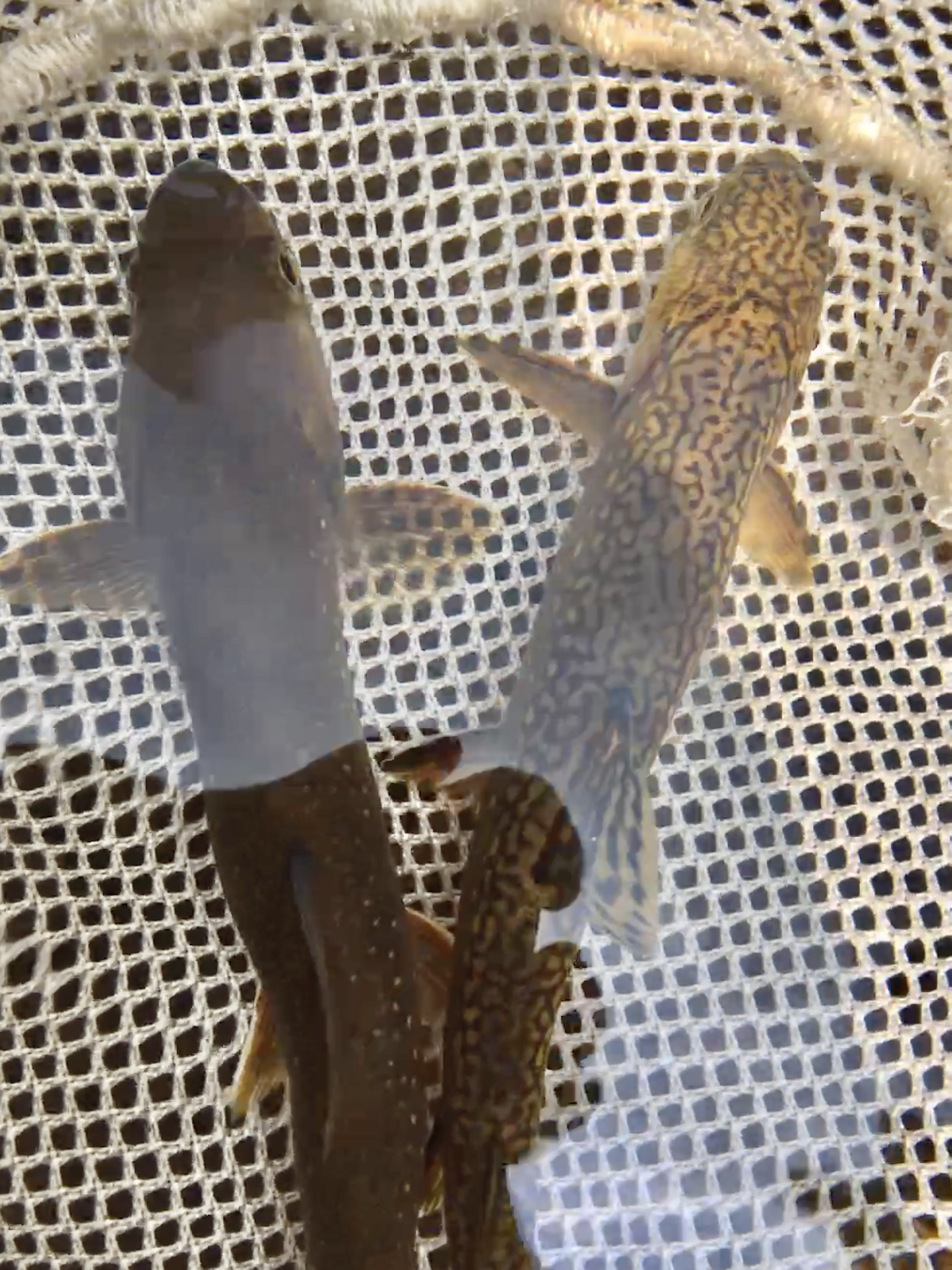
The threatened and native bull trout (left) has been interbreeding with the invasive brook trout (right) causing some population challenges for restoration efforts.
Courtesy of Rebecca Fritz, Burns Paiute Tribe
In the waterways of the Malheur National Forest, the invasive brook trout has been outcompeting the native bull trout, which is listed as threatened under the Endangered Species Act.
But now, a new project from federal, state and tribal governments plans to eradicate the invasive fish with a poison, Rotenone, which is derived from a plant.
Brook trout were first introduced in the 1930s in the streams of the Malheur National Forest to create favorable angling conditions.
“It was a different time, when there were different goals,” said Brandon Haslick, the fishery program manager for the Burns Paiute Tribe.
The ancestors of those introduced fish are harming native wildlife with their aggressive predation. Brook trout have also been interbreeding with bull trout, spawning fertile hybrids between the two species.
The interbred hybrids imperil population restoration efforts to save the federally protected bull trout species from its native waterways in Oregon, Washington, Idaho and western Montana.

In 1998, bull trout were labeled as threatened under the Endangered Species Act.
U.S. Fish and Wildlife Service
The Burns Paiute Tribe began addressing this issue a decade ago by targeting the invasive trout with electric fishing and netting, but had little success.
“We still had brook trout outnumbering bull trout by about 20 to 1,” said Haslick.
“We were still fighting a losing battle,” said Haslick. “We had to look at other options.”
The new project will be spearheaded by a committee composed of representatives by the Burns Paiute Tribe, the Oregon Department of Fish and Wildlife, U.S. Fish and Wildlife, U.S. Forest Service and the U.S. Bureau of Reclamation.
Rotenone, the plant-derived toxin that will be used in this new effort to control the invasive brook trout, kills fish by disrupting its uptake of oxygen.
The toxin would affect all fish within an area, so officials will need to capture bull trout and other native fish that may be nearby and move them further downstream.
The project is expected to last for two summer seasons, with the first round of treatment beginning this year.
Brandon Haslick joined “Think Out Loud” to discuss the new project to eradicate brook trout at High Lake and Lake Creek. You can listen to the full conversation here:



